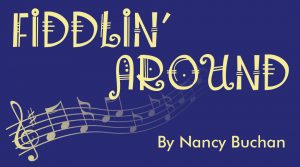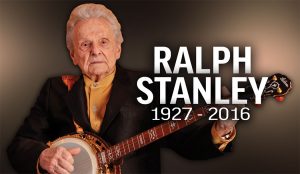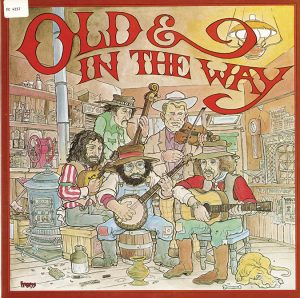High Lonesome Sound
 There’s a feeling that can quietly creep over us and which is painful, but also kind of unique to each of us, which makes it even more powerful. I’m talking about being lonesome. Some sounds and musical efforts to explain this isolating and singular sorrow do better at defining this very un-definable word than words ever could. Musical sounds that can’t be described very well but we all know what they ‘feel’ like. Lonesome is the sound of one trumpeter playing taps in a quiet graveyard. Lonesome is the sound of an unseen paddle wheeler blowing its steam whistle to warn other boats on a foggy and dark Mississippi River. Lonesome is a train whistle somewhere in the distance on a hot summer night. Lonesome is Carlos Santana’s distinctive guitar echoing through a hushed and reverent stadium before the rest of the band kicks in. Lonesome is hearing two coyotes (some Native Americans called them ‘song dogs’) singing to each other across a vast mountain meadow. Lonesome is the sound of a frightened kitten abandoned in an urban alley. The great and often troubled Hank Williams wrote a song called I’m So Lonesome I Could Cry in the 1940s that perhaps says it best:
There’s a feeling that can quietly creep over us and which is painful, but also kind of unique to each of us, which makes it even more powerful. I’m talking about being lonesome. Some sounds and musical efforts to explain this isolating and singular sorrow do better at defining this very un-definable word than words ever could. Musical sounds that can’t be described very well but we all know what they ‘feel’ like. Lonesome is the sound of one trumpeter playing taps in a quiet graveyard. Lonesome is the sound of an unseen paddle wheeler blowing its steam whistle to warn other boats on a foggy and dark Mississippi River. Lonesome is a train whistle somewhere in the distance on a hot summer night. Lonesome is Carlos Santana’s distinctive guitar echoing through a hushed and reverent stadium before the rest of the band kicks in. Lonesome is hearing two coyotes (some Native Americans called them ‘song dogs’) singing to each other across a vast mountain meadow. Lonesome is the sound of a frightened kitten abandoned in an urban alley. The great and often troubled Hank Williams wrote a song called I’m So Lonesome I Could Cry in the 1940s that perhaps says it best:
Hear the lonesome whippoorwill, he sounds too blue to fly. The midnight train is whining low, I’m so lonesome I could cry. I’ve never seen a night so long, when time goes crawling by. The moon just went behind a cloud, to hide its face and cry. Did you ever see a robin weep, when leaves begin to die? That means he’s lost the will to live—I’m so lonesome I could cry. The silence of a falling star, lights up a purple sky. And as I wonder where you are, I’m so lonesome I could cry.”
This must be a universal feeling, ‘cause look at the musicians who have recorded this song—Leon Russell, Ray Charles, Dean Martin, Johnny Cash, Marty Robbins, Al Green, B.J. Thomas, Freddy Fender, Bob Dylan, Wynonna Judd, Little Richard, Elvis Presley, Pat Metheny, Jerry Lee Lewis, The Cowboy Junkies and a whole bunch of modern punk rockers. Feeling lonesome isn’t the same as being sad, and it’s not even necessarily about being alone. It can be because you’re missing someone you’ve lost, or because you’re missing something you never had. It doesn’t have to throw you into a full-blown depression, but it’s not exactly a light-hearted happy feeling either. It’s something you are all by yourself, yet we all feel that way sometimes. Any one line of Hank’s tells us more than the lame-ass definitions I found in reference books—being dejected because of lack of companionship, or depressed at lack of friends, or desolate, or remote, or secluded from society, or conscious of one’s solitude. Nah, being lonesome is somethin’ Hank knew about and it’s as simple as a robin in winter or a silent falling star. And think about this—the word lonesome has no opposite in the dictionary.
 I found myself doing some daytime drinking at Wacky Wanda’s recently and sometime during the blurry Star Wars bar scene someone put on some ancient bluegrass music. I think there was dancing involved at some point, and certainly some attempts at singing. The next day I felt the need for aspirin and to listen to some fiddles and banjos and to the unique voice of Ralph Stanley, who had died earlier that week at the age of 89—after all, we had been toasting to him the day before. He started out with his brother in 1946 playing what he called ‘old time mountain style music’ in southwest Virginia. He played a style of banjo called ‘clawhammer’—sometimes it was called ‘frailing’, but for some reason he didn’t favor that term or in calling his music bluegrass. In his style of playing you hold your right hand in kind of a claw position and instead of using the fingers to strum upwards and the thumb to do a downbeat, the whole thing is a percussive weird downstroke. Anyway, ‘ole Ralph also had an unusual singing style, mostly singing the high parts of the vocal harmonies. In the 60’s the Stanley Brothers and later his band the Clinch Mountain Boys were exposed to new audiences on college campuses, European festivals and to folk music fans. In 2000 he won a Grammy for his a cappella version of O Death, which was featured in the excellent soundtrack of the surprise hit movie O Brother Where Art Thou? Another gone but not forgotten unusual roots musician—look him up on the internet and check out his lonesome sound.
I found myself doing some daytime drinking at Wacky Wanda’s recently and sometime during the blurry Star Wars bar scene someone put on some ancient bluegrass music. I think there was dancing involved at some point, and certainly some attempts at singing. The next day I felt the need for aspirin and to listen to some fiddles and banjos and to the unique voice of Ralph Stanley, who had died earlier that week at the age of 89—after all, we had been toasting to him the day before. He started out with his brother in 1946 playing what he called ‘old time mountain style music’ in southwest Virginia. He played a style of banjo called ‘clawhammer’—sometimes it was called ‘frailing’, but for some reason he didn’t favor that term or in calling his music bluegrass. In his style of playing you hold your right hand in kind of a claw position and instead of using the fingers to strum upwards and the thumb to do a downbeat, the whole thing is a percussive weird downstroke. Anyway, ‘ole Ralph also had an unusual singing style, mostly singing the high parts of the vocal harmonies. In the 60’s the Stanley Brothers and later his band the Clinch Mountain Boys were exposed to new audiences on college campuses, European festivals and to folk music fans. In 2000 he won a Grammy for his a cappella version of O Death, which was featured in the excellent soundtrack of the surprise hit movie O Brother Where Art Thou? Another gone but not forgotten unusual roots musician—look him up on the internet and check out his lonesome sound.
The phrase High Lonesome Sound refers to the American roots music most of us call Bluegrass. It was inspired by immigrants from Scotland, England, Wales and Ireland and has borrowed many of the melodies of their traditional music. In bluegrass, as in some forms of jazz, country, and rock, one or more instruments take turns playing the melody and improvising around it, while the other instruments accompany and provide rhythm. Old Time Music, like Dixieland Jazz, usually has all the instruments playing the melody. It’s like weaving a bunch of similar musical threads together. Bluegrass originated in rural dance bands in Appalachia, and is traditionally played on acoustic stringed instruments—the fiddle, 4 and 5 string banjos, guitar, mandolin, upright string bass, dobro and sometimes harmonica. The ‘father’ of bluegrass, Bill Monroe, characterized it as “Scottish bagpipes and old time fiddlin’. It’s Methodist and Holiness and Baptist. It’s Blues and Jazz, and it has a high lonesome sound.”
Bluegrass guitar is usually played in the flat-picking style, and the banjo players use a 3 finger picking style. Fiddlers use a lot of double strings, using intervals of thirds and fifths, which creates a distinctive sound. The bass is almost always played pizzicato (no bow—plucked) and occasionally uses a ‘slap-style’ percussive technique. Another distinguishing characteristic of bluegrass are the vocal harmonies—usually featuring 2, 3, or 4 parts, often with a dissonant or modal sound in the highest voice—another reason why it’s described as the ‘high, lonesome sound’. The order and layering is called the vocal stack. A standard stack has a baritone voice at the bottom, the lead voice in the middle with the main melody, and a tenor at the top. Including higher female voices alters the stack, with the high lead voice an octave above the standard melody line. Bluegrass music, which can be old-timey, or gospel influenced, or traditional, or what’s now called newgrass, has attracted a diverse and loyal following all around the globe. There are bluegrass festivals, bluegrass camps, Library of Congress and Smithsonian recordings, documentaries, magazines, fan clubs, cross-over stars and plenty of front-porch pickers. Nothin’ is more fun than hanging out around the campfire playing Pig in a Pen or Sally Goodin with a bunch of wacko bluegrass pickers and singers. A bluegrass festival is much more than a regular concert—there are workshops on instrument building, styles of playing, history, food, and stories about rural traditions. Lots of pickin’ and grinnin’.
 Bluegrass music has an authenticity that its in-bred cousin, country music, can only aspire to. It offers musical pleasure with the depth and soul of generations of musicians who have crossed oceans and cultures, and who found a way to capture the pain of living not through the slow blues of their African-American counterparts, but with songs of praise and mirth and stories. Steve Martin used to do a hilarious routine about how he could play a song about death and poverty and murder on the banjo and it would still sound happy. Today there are many ‘jam bands’ that incorporate bluegrass into their rock compositions. Jerry Garcia (Grateful Dead) loved bluegrass, and was part of one of the most important bluegrass albums of all time, Old and In The Way, which also featured David Grisman, Peter Rowan, John Kahn and my all-time favorite fiddler, Vassar Clements. Vassar was an amazing musician from Kissimmee, Florida who could play lightning fast impossible stuff or slow emotional material that could make you weep. He couldn’t read music, so I think he never knew how technically difficult the stuff he wrote and played really was. He asked me once to play for him the music from a book that had been published of transcriptions of his songs. He was curious to see how close the writer had come to accurately reproducing his work through musical notation. It was hard as hell—I could barely wade through it and surely did not do it justice, but ever the gentleman, he thanked me for trying……
Bluegrass music has an authenticity that its in-bred cousin, country music, can only aspire to. It offers musical pleasure with the depth and soul of generations of musicians who have crossed oceans and cultures, and who found a way to capture the pain of living not through the slow blues of their African-American counterparts, but with songs of praise and mirth and stories. Steve Martin used to do a hilarious routine about how he could play a song about death and poverty and murder on the banjo and it would still sound happy. Today there are many ‘jam bands’ that incorporate bluegrass into their rock compositions. Jerry Garcia (Grateful Dead) loved bluegrass, and was part of one of the most important bluegrass albums of all time, Old and In The Way, which also featured David Grisman, Peter Rowan, John Kahn and my all-time favorite fiddler, Vassar Clements. Vassar was an amazing musician from Kissimmee, Florida who could play lightning fast impossible stuff or slow emotional material that could make you weep. He couldn’t read music, so I think he never knew how technically difficult the stuff he wrote and played really was. He asked me once to play for him the music from a book that had been published of transcriptions of his songs. He was curious to see how close the writer had come to accurately reproducing his work through musical notation. It was hard as hell—I could barely wade through it and surely did not do it justice, but ever the gentleman, he thanked me for trying……
Bluegrass music is a wonderful, fun and expressive style that I hope everyone will expose themselves to at some point. It has a rich history, and the ‘stars’ of this genre are almost always accessible, nice humble people who play with generosity and a love for their music. While you’re at it, expose yourself to live music whenever you can—check around the area to see who’s bringing musicians to the stage and go support them! Come on south some Friday night to Dominical and dance to Ben Jammin’ and the Howlers at the beautiful and spacious Roca Verde—especially if you’re feeling a bit lonesome.
I wanna hear that high lonesome sound, ‘cause my sweet baby ain’t around. When my life’s got me down, I wanna hear that high lonesome sound. Vince Gill
The lonesome sigh of a train going by makes me want to stop and cry. I recall the day it took you away—I’m blue, I’m lonesome too. Bill Monroe
Everybody’s going out and having fun. I’m a fool for staying home and having none. I can’t get over how she set me free, oh lonesome me. Guitarist Don Gibson
The worst loneliness is not to be comfortable with yourself. Mark Twain
